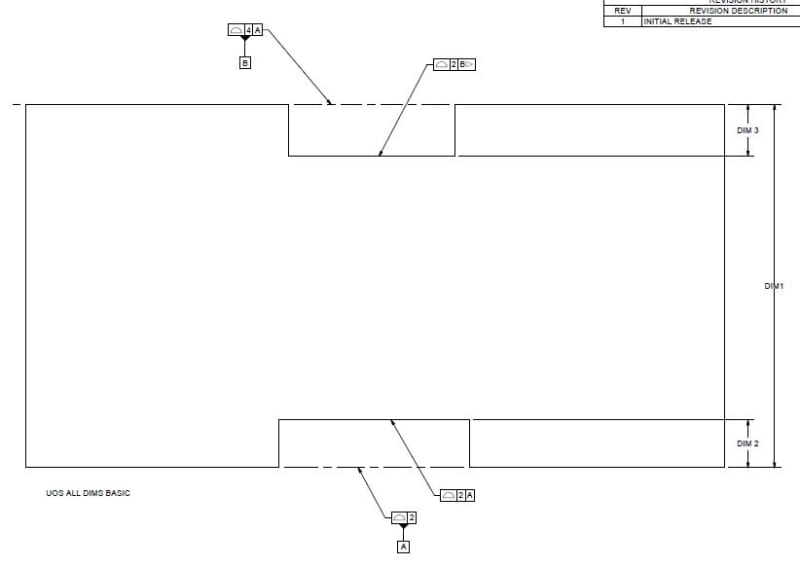AMontembeault
Mechanical
Can a datum translation modifier be used when the datum is a planar surface? I can't see anything in the standard which seems to explicitly prohibit this, but every example out there I can find typically only demonstrates this concept using a datum derived from a feature of size (typically a hole or pin).
My application is, I have a rectangular part, with notches cut on opposite ends (Call them datum A and Datum B). I want to control the depth of the notches relative to their respective end face. So my thought was, control the notches on the A datum face back to A, control B datum face back to A, and control the notches on B back to B with a translation callout (otherwise B is controlled at a basic dim back to A, which would give me the wrong stack-up of tolerances).
My application is, I have a rectangular part, with notches cut on opposite ends (Call them datum A and Datum B). I want to control the depth of the notches relative to their respective end face. So my thought was, control the notches on the A datum face back to A, control B datum face back to A, and control the notches on B back to B with a translation callout (otherwise B is controlled at a basic dim back to A, which would give me the wrong stack-up of tolerances).

